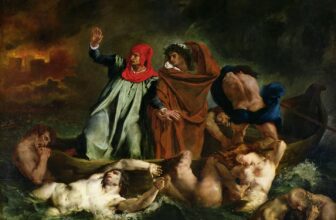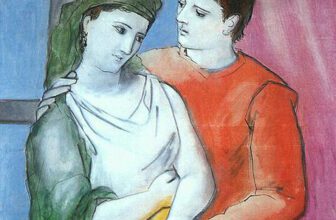
The Timeless Influence of the Mona Lisa
The Mona Lisa, Leonardo da Vinci’s most celebrated masterpiece, is more than just a painting, it is a cultural icon that has shaped the art world and beyond. From its enigmatic smile to its profound influence on modern art, humanism, and contemporary culture, the Mona Lisa has transcended the canvas to become one of the most recognized and revered images in human history. But why is the Mona Lisa so influential? How has it impacted modern art? And what does the future hold for this legendary artwork?
The Cultural Influence of the Mona Lisa
The Mona Lisa has had a profound influence on culture for over 500 years. Originally commissioned by a Florentine merchant, the painting gained widespread recognition due to Leonardo da Vinci’s innovative techniques, mastery of realism, and the air of mystery surrounding the subject. The portrait became synonymous with artistic perfection and was widely studied and admired by artists, scholars, and historians.
One of the major factors that cemented the Mona Lisa’s cultural importance was its theft in 1911. When Vincenzo Peruggia stole the painting from the Louvre, it became front-page news worldwide. This event catapulted the Mona Lisa into global fame, making it a symbol of art’s immense value and cultural significance. Following its recovery, the painting became a must-see attraction, drawing millions of visitors to the Louvre each year.
The Mona Lisa’s impact has extended beyond the art world into popular culture. It has been parodied, reinterpreted, and adapted in numerous forms, from Marcel Duchamp’s irreverent “L.H.O.O.Q.”, where he famously drew a mustache on a copy of the Mona Lisa, to pop culture references in films, advertisements, and fashion. The portrait has appeared on T-shirts, mugs, album covers, and even in the digital world, reinforcing its status as a universal cultural touchstone.
Why Is the Mona Lisa So Influential?
The Mona Lisa’s influence is rooted in its technical mastery, mysterious subject, and the global fascination surrounding it. Leonardo da Vinci’s application of sfumato, a technique that creates soft transitions between colors and tones, gave the painting an unprecedented level of realism. The play of light and shadow, along with the subtle gradations of color, gives the Mona Lisa an almost lifelike presence.
Additionally, the expression on the subject’s face, her enigmatic smile, has intrigued viewers for centuries. Unlike other portraits of its time, the Mona Lisa’s smile conveys an ambiguous emotion, sparking endless debates and interpretations. This mystery has kept audiences engaged, making the painting an eternal subject of fascination and scholarly inquiry.
The Mona Lisa also exemplifies Renaissance ideals, blending art, science, and philosophy. Leonardo’s understanding of anatomy, perspective, and naturalism allowed him to create a work that embodies the intellectual spirit of his time. As a result, the Mona Lisa is more than just a painting; it is a representation of human achievement, innovation, and the pursuit of knowledge.
The Mona Lisa’s Impact on Modern Art
The Mona Lisa has had a lasting impact on modern art, influencing artists across different movements and generations. The portrait’s fame and significance have made it a benchmark for artistic excellence, inspiring countless reinterpretations and creative explorations.
During the 20th century, artists like Marcel Duchamp and Salvador Dalí challenged traditional artistic norms by using the Mona Lisa as a canvas for experimentation. Duchamp’s “L.H.O.O.Q.” was a bold statement that questioned artistic authority and tradition, embodying the Dada movement’s anti-establishment ethos. Dalí’s surrealist interpretations of the Mona Lisa added another layer of complexity to the painting’s cultural relevance.
Beyond the avant-garde, the Mona Lisa has influenced contemporary artists, digital media, and artificial intelligence in art. Artists have used technology to create modern versions of the Mona Lisa, incorporating new mediums such as augmented reality and virtual reality. This continual reinvention ensures that the Mona Lisa remains relevant in the digital age, demonstrating its adaptability and lasting appeal.
The Mona Lisa as a Representation of Humanism
The Mona Lisa is a quintessential representation of humanism, an intellectual movement that emerged during the Renaissance, emphasizing the value, dignity, and potential of human beings. Leonardo da Vinci’s portrait captures the essence of humanism through its naturalistic depiction, psychological depth, and philosophical undertones.
Unlike the rigid, symbolic portraits of the medieval period, the Mona Lisa portrays a real human being with a unique personality and inner life. Her gaze engages the viewer directly, establishing an intimate connection that transcends time. This human-centered approach reflects the Renaissance belief in the importance of the individual and the study of human nature.
Leonardo da Vinci’s deep understanding of anatomy and the natural world further reinforces the humanist ideals in the Mona Lisa. His meticulous attention to detail, from the intricate folds of her clothing to the delicate rendering of her hands, showcases a reverence for both science and art. The landscape in the background, with its atmospheric perspective and ethereal beauty, symbolizes humanity’s relationship with the natural world—a central theme in humanist philosophy.
Ultimately, the Mona Lisa represents the human spirit’s curiosity, intellect, and artistic expression. It embodies the ideals of self-awareness, introspection, and the pursuit of beauty, making it a timeless symbol of humanism.
The Future of the Mona Lisa
As we move further into the digital age, the Mona Lisa continues to evolve, finding new ways to captivate and inspire. Advances in technology have opened up innovative avenues for experiencing and interacting with the painting. Augmented reality, virtual reality, and AI-generated art have allowed audiences to engage with the Mona Lisa in unprecedented ways, breaking traditional barriers of access and interpretation.
One notable development is the rise of digital replicas and NFTs (non-fungible tokens) based on the Mona Lisa. While these technological adaptations raise questions about originality and artistic ownership, they also provide new opportunities for the artwork to reach wider audiences. The Mona Lisa’s presence in the digital realm ensures that it remains relevant in contemporary discussions about art and culture.
Moreover, the ongoing restoration and conservation efforts at the Louvre highlight the importance of preserving the Mona Lisa for future generations. As one of the most studied and analyzed paintings in history, new scientific discoveries about the artwork continue to emerge, offering fresh insights into Leonardo da Vinci’s techniques and artistic process.
Looking ahead, the Mona Lisa’s influence will likely expand into new frontiers, from artificial intelligence-generated art to holographic displays. Its legacy as a cultural and artistic icon will persist, inspiring future generations of artists, scholars, and art enthusiasts. The Mona Lisa is not just a relic of the past, it is a living masterpiece that continues to shape the future of art and culture.
The Mona Lisa’s influence on culture, modern art, and humanism is unparalleled. From its enigmatic smile to its groundbreaking artistic techniques, the painting has captivated audiences for centuries and remains an enduring symbol of artistic excellence and intellectual curiosity. Its impact on modern art has paved the way for creative reinterpretations, challenging traditional artistic boundaries. As a representation of humanism, the Mona Lisa embodies the beauty and complexity of the human experience.
As technology continues to evolve, so will the ways in which we interact with and interpret the Mona Lisa. Whether through digital innovations, AI-generated art, or new artistic movements, the painting’s influence will persist, ensuring that it remains one of the most celebrated and beloved masterpieces in human history. The Mona Lisa’s journey is far from over, it is an ever-evolving testament to the power of art to inspire, intrigue, and connect humanity across time and space.




